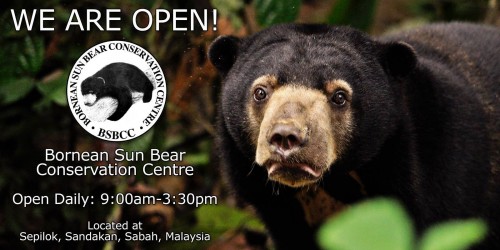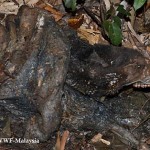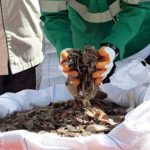
The Bornean Sun Bear Conservation Centre in Sabah, Malaysia, is set to welcome the general public on January 17, 2014.
Founded by Malaysian wildlife biologist Siew Te Wong in 2008, the BSBCC’s mission is to promote sun bear conservation in Borneo through animal welfare, conservation, rehabilitation, education and research. The Centre gives captured sun bears a new lease on life and restores their right to live in the wild.
Visitors now have the amazing opportunity to enjoy observing the sun bears in their natural forest habitat from tree-level viewing platforms. Watch the video below to see what awaits you when you visit BSBCC:
Hours, directions, and all other information can be found on the Visit BSBCC page on their website.
Sun bears are most aboreal bear species, and Wong describes the sun bear as “the least known bear”. Not only are they the world’s smallest bear (weighing just 30 to 70 kg), sun bear vocalizations sound like a dog’s bark and they swing through trees like orangutans.
Historically, sun bears lived in mainland Southeast Asia as far west as Bangladesh and northeastern India, as far north as southern Yunnan Province in China, and south and east to Sumatra and Borneo. Sun bear populations are in decline, having suffered more than a 30 percent decline in the past 30 years; the species is now extinct in Singapore.
The extreme cuteness of sun bear cubs is unfortunately one of the reasons why this species is in decline. Cubs are stolen from their mothers (who are usually killed) to be kept as pets. Adorable baby sun bears grow into strong, dangerous adults, equipped with long sharp claws and a powerful set of canines. Once grown, unmanageable “pet” bears are locked away in tiny cages or sold to wildlife traffickers. BSBCC rescues, rehabilitates and releases these bears into their natural habitat.
Adult bears are killed for their gallbladders, the bile of which is used in traditional Chinese medicine — despite the availability of more than 50 effective herbal alternatives to bear bile. And bear paws are a popular delicacy, especially in China. Wong is understandably disgusted when he explains that it’s easy to find “recipes for bear paw soup” with a simple internet search.
Like all of Southeast Asia’s unique wildlife, sun bears are experiencing the loss of their forest habitat because of clear-cutting for plantation development.
- Bornean Sun Bear Conservation Centre website
- Bornean Sun Bear Conservation Centre Facebook page




